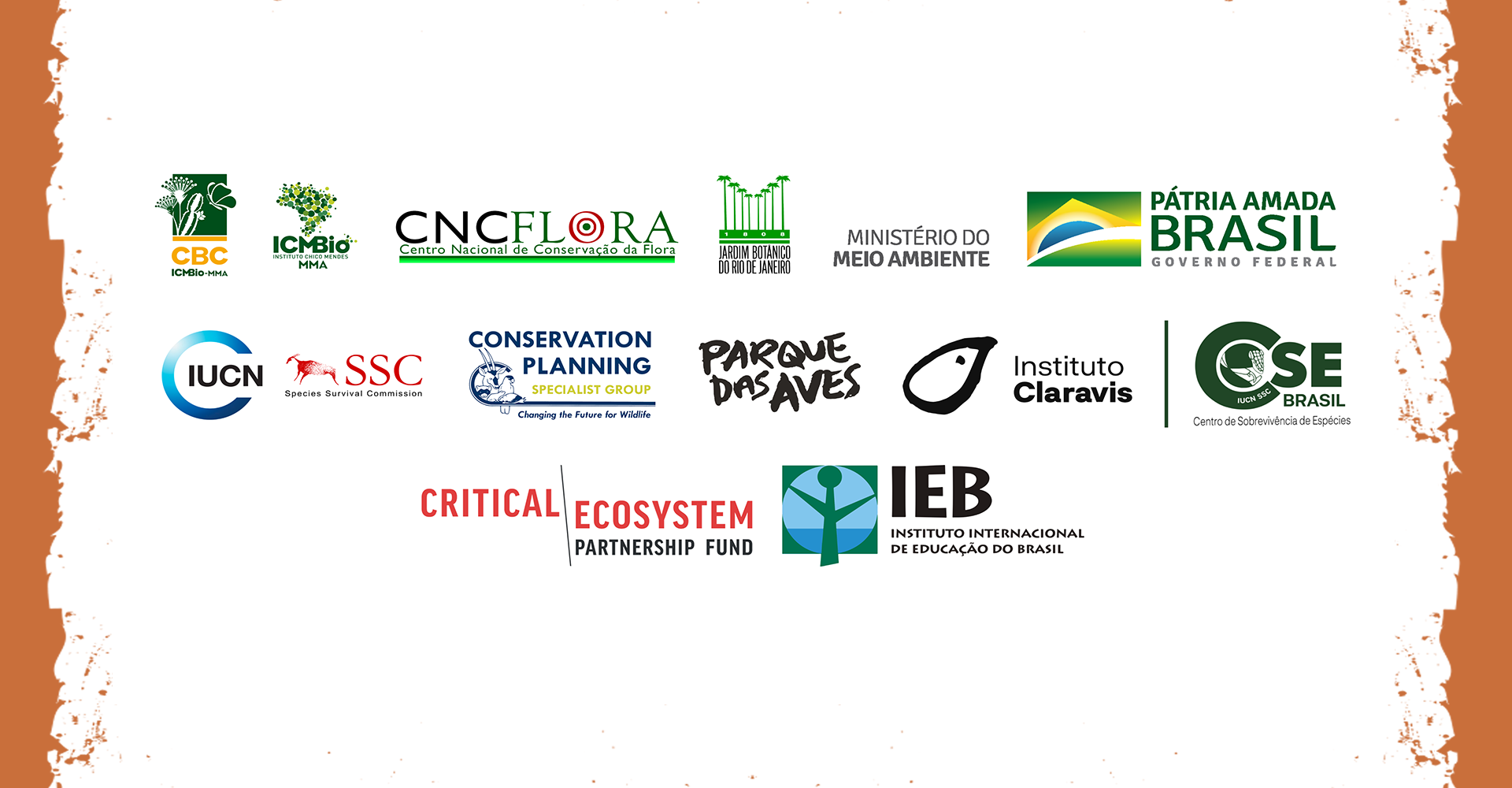Menu
Menu
Menu
Menu
Menu
PT EN
CEPF Project: Together for the species of the Cerrado, it is the union of national and international institutions to invest, research, plan, enable and execute actions in favor of environmental conservation in the region.
CEPF Project: Together for the species of the Cerrado, it is the union of national and international institutions to invest, research, plan, enable and execute actions in favor of environmental conservation in the region.
Build capacity to apply the tools of the International Union for Conservation of Nature (IUCN) in Brazil and to improve integration with international strategies, while advancing in the management of the country’s natural resources, with emphasis on the Cerrado biome. To this end, the project will use three strategic tools for conservation: extinction risk assessments (IUCN Red List), National Action Plans, and the IUCN Green Status of Species.
The project has five specific objectives:
Elaboration of the second cycle of the National Action Plan for the Conservation of the Faveiro-de-Wilson (Dimorphandra wilsonii Rizzini)
Responsible institution: Brazilian National Center for Plant Conservation/ Rio de Janeiro Botanical Garden Research Institute (CNCFlora/JBRJ)
Relevance: It will enable a redefinition of the objectives and priority actions, as well as the expansion of the efforts undertaken for the conservation and recovery of the populations of the target species and include in its scope the Faveiro-da-Mata (Dimorphandra exaltata), another species currently recognized as globally threatened with extinction.
Application of the IUCN Green Status of Species to assess the recovery potential and conservation status of Uebelmannia buiningii and 9 other endemic and threatened cacti.
Responsible institution: Brazilian National Center for Plant Conservation/ Rio de Janeiro Botanical Garden Research Institute (CNCFlora/JBRJ)
Relevance: With the advancement of new analytical tools, the protocol meets the demand to measure the successful recovery of a species threatened with extinction in the wild.
Enhancement of Fauna Species Extinction Risk Assessment System (SALVE) to allow its integration with IUCN Species Information System (SIS), allowing Brazilian national assessments to be incorporated into IUCN Red List global assessments.
Responsible institution: National Center for Biodiversity Assessment and Research and Conservation of the Cerrado of the Chico Mendes Institute for Biodiversity Conservation / (CBC/ICMBio)
Relevance: It will promote better management of information on Brazilian endangered fauna, with the incorporation of the national assessments of Brazilian fauna species into the IUCN Red List, with an emphasis on the Cerrado species. This is especially important for endemic species that will benefit directly, allowing them to become objects of international biodiversity conservation initiatives.
Translation of the “Guidelines for using the IUCN Red List Categories and Criteria” and the “IUCN Red List Online Course” into Portuguese.
Responsible institution: IUCN SSC Center for Species Survival Brazil (CSS Brazil)
Relevance: Removing the language barrier will facilitate the training of people in the IUCN Red List methodology and increase capacity to apply it in Brazil. The translation work also includes an alignment component of technical terms between the three executing institutions. The dialogue with the Chico Mendes Institute for Biodiversity, the Rio de Janeiro Botanical Garden and the IUCN will catalyze integrated actions and policies for the conservation and sustainable development of the Cerrado.
Communication of project actions, results, and impacts.
Responsible institution: IUCN SSC Center for Species Survival Brazil (CSS Brazil)
Relevance: In addition to publicizing the results and impacts of the project, it will be possible to give more visibility to Cerrado species, with an emphasis on endangered and endemic species. The three strategic tools for conservation applied in the project (Red List, National Action Plans and the IUCN Green State protocol) and their application by partner institutions will also be presented in a clear, responsible and precise manner.

Complaints Mechanism
We provide the following communication channels to allow any person or group of people the opportunity to express their opinions and concerns about the project. Complaints and suggestions will be addressed in a transparent, impartial, and culturally acceptable manner.
E-mail and phone number of Instituto Claravis/ IUCN SSC CSS Brazil:
+55-45 -3529-8282
We will share all complaints – and a proposed response – with the Regional Implementation Team and the CEPF Grant Director within 15 days of receiving them.
If applicants are not satisfied following the response, they can submit the complaint directly to the CEPF Executive Director [email protected] or by mail at their local World Bank office.








